Anyone who’s read the Harry Potter series and/or watched the movies will probably agree that throughout their years at Hogwarts School of Witchcraft and Wizardry, Harry and his friends come face to face with some of their biggest fears on numerous occasions. The series does such an outstanding job of demonstrating how different characters cope with anxiety and fear, that I couldn’t resist using these examples in my work with patients with anxiety. Here is how Harry Potter can be incorporated into therapy and what we can learn from the series about facing our own fears.
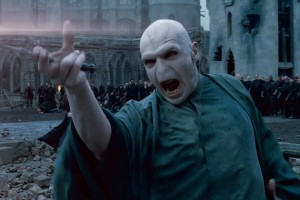
From the Basilisk, to the Death Eaters, to Voldemort himself, Harry Potter and his friends have many things to fear throughout their years at Hogwarts School for Witchcraft and Wizardry, not to mention the usual things that give young people anxiety: school work, fitting in, battling bullying and false rumors, and mending broken hearts.
Brief summary:
The Harry Potter books are about a young boy, whose parents are murdered by a dark wizard, Lord Voldemort, when Harry was just 1 year old. When Harry turns 11, he learns that he is in fact a wizard, and that Lord Voldemort had actually intended to kill him too but somehow was not able to. Something about Harry stopped Voldemort and destroyed him. Harry is then able to attend Hogwarts School for Witchcraft and Wizardry, where he meets Ron Weasley and Hermione Granger, who become his best friends.
While many believe that Lord Voldemort died the night that he killed Harry’s parents, this is not actually the case. Lord Voldemort comes back, gaining his powers back over the years, using monsters and cursed artifacts to return to power. It is then up to Harry and his friends to stop Lord Voldemort and his army, the Death Eaters, from killing all the non-magical humans (Muggles), as well as many of the witches and wizards (Muggle-borns) around the world.
ANXIETY DISORDERS:
Anxiety disorders are the most common mental health disorders and affect approximately 18% of the population in the United States. The most common anxiety disorders are Generalized Anxiety Disorder (constant, exaggerated worry about a number of things, thinking worst case scenarios), Specific Phobia (being afraid of an object, such as a spider, or a situation, such as flying), and Social Anxiety Disorder (intense fear of being judged or embarrassed). Let’s take a look at some examples of these from the Harry Potter series:
Generalized Anxiety Disorder:
The core of Generalized Anxiety Disorder (GAD) is uncontrollable worry about a number of different aspects of someone’s life, such as family, health, finances, and others. This worry is usually exaggerated, where one is overwhelmed and consumed by the worry, which usually leads to difficulty in functioning. Typically, GAD leads to catastrophizing, which means assuming that the worst possible scenario will occur.
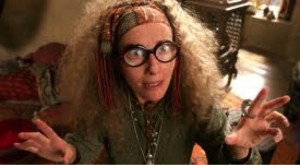
A terrific example of catastrophizing is seen in Professor Sybill Trelawney, the Divination teacher. Divination is the study of predicting (divining) the future by reading the tea leaves and gazing into the crystal ball. Trelawney’s predictions are nearly always dark and grim, where she suggests that her students, in particular, Harry Potter, will die a painful death.
We learn in book 3, Harry Potter and the Prisoner of Azkaban, that Trelawney follows a predictable pattern: every year she selects one student whom she believes to be cursed and countlessly predicts that student’s untimely demise, and she is always, or nearly always, wrong. Let’s be honest, Professor Trelawney is not very good at Divination, although she is clearly not aware of this. Trelawney makes countless predictions each and every day, yet only a very very small number of them comes true.
How is this relevant to the mental health treatment of anxiety? The types of mental health interventions for anxiety that have been most heavily studied and shown to be effective for these disorders are Cognitive Behavioral Therapy and Acceptance and Commitment Therapy. Cognitive Behavioral Therapy (CBT) focuses on the relationship between thoughts, feelings, and behaviors. These are bidirectional, which means that they all affect one another.
For example, when Trelawney comes to the Great Hall for Christmas lunch, she refuses to sit at the table with the other faculty and students, stating that “when thirteen dine together, the first to rise will be the first to die.” While the accuracy of that statement is debatable, let’s focus on how her thoughts affected her feelings and behaviors. Trelawney’s thought, “if I sit down, there will be 13 of us and someone will therefore, die,” caused her to experience evident fear and distress, leading to her leaving the table. If Professor Trelawney was my patient undergoing CBT treatment, I would work with her on analyzing the validity of her thoughts (seeing how accurate they are) and work with her on reducing her avoidance behaviors (such as leaving the table) by leading her through a series of exposures, which refers to gradually facing one’s fear in order to show that the feared outcome will not occur (or even if it does, demonstrating that the individual is capable of handling it).
Acceptance and Commitment Therapy (ACT) is similar to CBT in the sense that it also looks at the relationship between our internal events (thoughts and feelings) and external events (behaviors), only with a few differences. Perhaps the most important element of ACT is the focus on values (the most important things to us), for example, friends, family, school, career, creativity, and others. When we are afraid, we often might avoid the feared situation, which will prevent us from doing things that are important to us.
People with anxiety disorders often have terrifying thoughts, which greatly overestimate the actual probability of danger. In my sessions with my patients, in particular those who like Harry Potter, I often use Trelawney as an example of how our mind generates terrifying predictions, where we envision the worst possible scenario, fusing with that thought, treating it as if the awful situation is actually happening. Here ACT would teach us to notice what is happening in the present moment (mindfulness). When we are imagining the worst possible scenario, we are caught up in the future (which most of the time never actually happens). However, in the present moment, the feared scenario is not occurring. One quick exercise I like to use with my patients in order to get at mindfulness is “Where are my feet?” Just by asking yourself this simple question, you might be able to feel your feet (or arms, or other parts of the body) and come back to the present moment.
How many times have we imagined that we would flunk out of school, lose our job, lose the people closest to us, or fail at something that means everything? Do you notice what happens in our bodies when we imagine that the worst possible scenario came true? You might notice that your heart rate increases, your breathing becomes more shallow (it might feel like it’s hard to breathe), you might experience chills or sweat, as well as possible changes in your stomach. This is called the fight-or-flight response.
The fight or flight response (also known as the stress or fear response) can be very helpful when we are faced with real danger. For example, if you notice that a car is coming right at you, your adrenaline would kick in, your brain activity would spike, causing you to make a quick decision to jump out of the way. In life-theratening or potentially dangerous situations, this stress response can potentially save your life.
What about other situations, ones where we might experience anxiety or worry, but ones that are not life-threatening? These are a little trickier. My response to this is always “it depends on what we do with it.” If as a result of being afraid we avoid important functions, then fear is not helpful. For example, if someone with panic attacks and agoraphobia (which is an intense fear of situations, where one might feel “trapped” and from which an escape might be difficult) is invited to a wedding of a close friend, the fear of having a panic attack might prevent this person from attending the wedding. Here the thought “if I go, I will have a panic attack, will feel trapped, and won’t be able to get out,” will cause this individual to experience the feeling of anxiety, or possibly a full blown panic attack, causing him or her to avoid attending the wedding. In this situation, anxiety, or more specifically, the beliefs about anxiety, are inhibiting this individual from doing what is important to him or her.
Here is the most important fact about fear: FEAR IS MEANT TO BE A MOTIVATOR, NOT AN INHIBITOR. It is meant to make us aware of potential dangers, so that we can react accordingly and plan to work toward our goals and values. For example, if you have a big presentation coming up, fear can be helpful in that it can motivate you to prepare and do a good job. However, sometimes if fear is too uncomfortable or feels dangerous, we might avoid those situations that cause fear, not because they might be dangerous but because we don’t want to experience fear. We listen to Trelawney’s meaningless predictions about how terribly the situation will turn out rather than trusting ourselves to succeed.
Another helpful metaphor for understanding fear is the gossiping Rita Skeeter. Skeeter is a reporter for the Daily Prophet, a popular newspaper in the wizarding world. To say that Rita’s stories are a bit sensationalized is a grotesque understatement. Skeeter will do anything for a story, including just making things up. I often use her as a metaphor for a “sensationalized headline” that our mind makes up. Just as most people (in the Magical or the Muggle community) do not pay attention to neutral or boring headlines, so do we. We often ignore the countless neutral or positive-sounding messages that our brain produces, usually tuning into the scariest and most upsetting ones, such as “you’re not good enough,” or “if you try this, you will fail,” or “nobody likes you.” Yet, just as we know that Rita’s gossip needs to be treated with a grain of salt, so too we need to remember that our our thoughts can be treated that way too. In CBT, this would be done by examining how valid and reliable the thoughts are, whereas in ACT, this would be accomplished by practicing defusion, which refers to noticing the thought (or reading the article in the Daily Prophet, or hearing Trelawney’s prediction) and learning how to treat is as one sensationalized message, rather than blindly believing it (which would be called fusion).
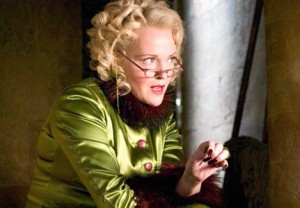
Specific Phobias:
Whereas Generalized Anxiety Disorder is characterized by uncontrollable worry about a variety of different situations, Specific Phobias involve intense fear of specific situations, such as animals (most common phobia), situational (driving, flying, elevators, tunnels), natural environments (storms, heights), blood injection, and other phobias, such as fear of clowns, for example. In Harry Potter and the Chamber of Secrets we find out that Ron suffers from a Specific Phobia – a fear of spiders (Arachnophobia, also shared with the Harry Potter author, J. K. Rowling), which began after Ron’s older twin brothers, Fred and George Weasley, transformed his teddy bear into a giant spider.
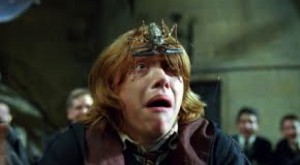
In Harry Potter and the Chamber of Secrets, when witches, wizards, as well as cats and ghosts are being attacked and Petrified (turned into stone) by an unknown monster, the entire Hogwarts School is in a state of panic. However, for Ron Weasley, the time we see him truly terrified is when he sees the spiders scurrying away from the Petrified victims. Ron himself appears to be petrified by his overwhelming fear, often unable to move.
How would treating a specific phobia look in therapy?
If Ron was my patient and if I was using CBT to treat him, we would start by looking at pictures of spiders until he was no longer afraid. We would then slowly work up toward other depictions of spiders, and eventually work toward him being in the same room with a spider, getting closer to the spider, and eventually holding a spider (a non-poisonous one). Over time and with consistent exposures, people with phobias show a great reduction in their fears and are able to be in the same environment with their feared objects. This is called habituation.
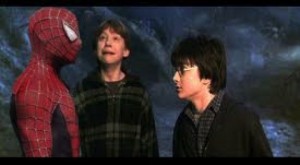
In Harry Potter and the Prisoner of Azkaban, Professor Lupin essentially incorporated an exposure intervention into his classroom, when he brought in the Boggarts. Boggarts are described as “amortal shape-shifting non-beings” that take shape of that which we fear the most. The way to defeat the Boggart is through facing it (rather than running away from it) and through utilizing the “Riddikulus” charm, which requires that the spell caster imagines the feared object as something ridiculous and funny.
When it is Ron’s turn to face the spider, he is initially overwhelmed by the 8-legged giant but is then able to use the spell to make the spider rollerskate in a clumsy manner. This change of perspective allows Ron to no longer view the spider as threatening. This is similar to an exposure in CBT, where Ron would have been asked to study the spider and realize that it is not dangerous.
Unlike cognitive behavioral therapy (CBT), which aims to reduce the anxiety about the feared object, acceptance and commitment therapy (ACT) seeks to encourage the person (Ron, in this case) to face their fear in the name of what is truly important. Here, the goal of the therapy would not necessarily be to reduce Ron’s fear of spiders, but rather to allow him to follow his heart, despite his fear (which would often reduce over the course of therapy). For example, in Harry Potter and the Chamber of Secrets, as terrified as he is, Ron joins Harry in following the spiders into the Forbidden Forest, in order to find out any information that might be helpful to rescue Hermione, who was Petrified in one of the attacks. Thus, ACT would teach Ron how to face his fear in order to save his friend. Because ACT so heavily focuses on following our values, I like to refer to it as Superhero Therapy, and often use Superheroes, as well as characters from Harry Potter, and other fictional works to motivate my clients to become their own versions of a Superhero and face their fears in the name of what’s truly important to them.
Social Anxiety Disorder:
Social anxiety disorder has to do with excessive and unreasonable fear of social situations, where the person fears being embarrassed or judged by others. Some common symptoms include physical symptoms of anxiety: increased heart rate, shallow breathing, sweating, as well as avoidance of social situations, where embarrassment is likely to occur.
One can argue that Neville Longbottom, one of Harry Potter’s classmates, might have social anxiety. To truly diagnose Neville we would need more information and a thorough clinical interview, but he does appear to have at least some traits of social anxiety. Neville is nervous when he has to speak in front of the class or perform in any manner. He stutters when he is nervous and is likely to drop something (like a cup in his Divination class) or make a mistake in brewing a potion in Professor Snape’s class.
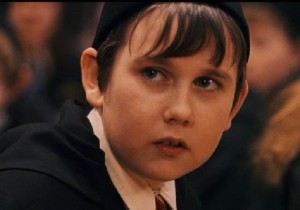
Neville’s potential social phobia is supported by the fact that his Boggart, the thing he most fears, turns into Professor Snape, who often teases and humiliates him. Professor Lupin does a terrific job of implementing an exposure with Neville. By making Neville come face to face with the Boggart version of Snape, Neville is able to use the Riddikulus spell to make Snape wear his grandmother’s clothes, making him less threatening. Click here to see this video.
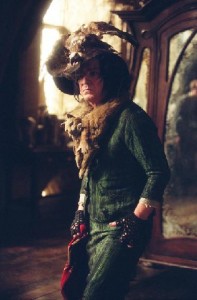
Over time, Neville begins to use his fear as a motivating force to do what is important: he leads the students in rebellion against the Death Eaters that have infested the school, he stands up to Lord Voldemort, and slays Nagini, Voldemort’s pet snake and Horcrux (a cursed object, where Voldemort hid a piece of his soul). I do not think anyone would argue that throughout all these events Neville was not afraid, however, in following his values, in standing up for what is right, Neville finds his courage and becomes a hero.
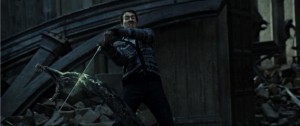
As the series continues, the challenges that our characters have to face grow exponentially – from deadly tasks, to tragic losses, to physically abusive teachers, like Professor Umbridge, to facing the Death Eaters and Lord Voldemort himself in the later series. Throughout these adventures, our heroes are tested in the most awful ways – Hermione forever erasing her parents’ memories in order to protect them, Harry attempting to cope with his many losses and the upcoming dangers, and Ron, who comes face to face with Voldemort’s spirit when attempting to destroy a cursed locket (a Horcrux), where a piece of Voldemort’s soul was hidden.
When Ron attempts to destroy the locket, he is threatened in a way that he has never been threatened before. Voldemort is able to see Ron’s biggest fears and is using them to stop him, initially as himself, and then taking an image of Harry and then Hermione, Ron’s love interest:
[Voldemort]: I have seen your heart and it’s mine. I have seen your dreams, Ronald Weasley, and I have seen your fears…
Least loved by the mother who craved a daughter. Least loved, by the girl who prefers your friend…
[Voldemort as Harry Potter]: We were better without you, happier without you.
[Voldemort as Hermione]: Who could look at you beside Harry Potter? What are you, compared to the Chosen One…?
[as Harry]: Your mother confessed that she would have preferred me as a son.
[as Hermione]: Who wouldn’t prefer him? What woman would take you? You are nothing… nothing… nothing to him…
[the two then begin to kiss in the fog]
[as Ron looks terrified]
[and then destroys the locket]: NOOOOOOO!
This was a big test for Ron – his worst fears displayed right in front of him, equivalent of a million catastrophic Trelawney predictions that are meant to create the feeling as if all of these horrible thoughts that Ron felt insecure about are actually true. As frightened as he was, Ron’s fear is transformed into courage as he leaps and destroys the locket, remembering what’s truly important to him.
Next post: Psychology of Harry Potter: post 3 of 3 (depression and trauma)
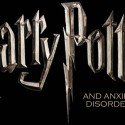
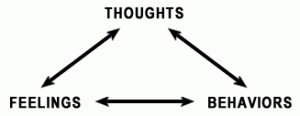


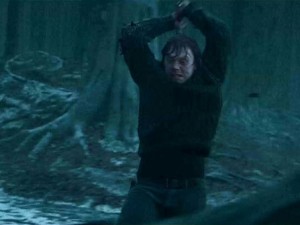
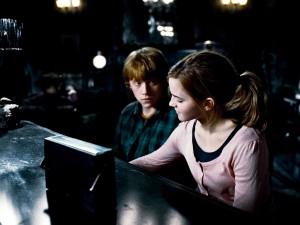
Actually, Trelawney was scared of sitting at the table because of her prediction, as you have noted, but you also said that it was a false prediction and that it was an irrational fear, but you are obviously not a true harry Potter fan like me. A true harry Potter fan will have looked into this and found this in their search:
Trelawney predicted “when thirteen dine at a table together, the first to leave will be the first to die.”
BUT… Ron had scabbers AKA worm tail AKA Peter Pettigrew. So when Trelawney refused to sit at the table, she made the prediction come true, because there were already thirteen people at the table. Dumbledoor rose from the table to get her chair for her, and that resulted in him being the first to die, in the half blood prince.
And this is coming from A 13 YEAR OLD so do some research before writing “fact”
Sorry for this comment, it’s not supposed to be a ‘hate’ comment, I’m just starting fact😓
Hi Arillian,
Thank you for your comment. You are right in that she made that statement and it did come true. I have come across that argument previously in my research and this is exactly why I linked the very article that talks about the arguments of how this statement did come true. However, I discounted it as a “prediction” because of the word “when”. To me it seems more of a superstition than a prediction and I believe there is a difference. However, we can disagree on this and that’s fine too. I applaud your passion and dedication to Harry Potter and thank you for reading
Would like to discuss you consulting on a motion picture.
Hi Dane,
Sure thing. Please email me superherotherapy@gmail.com